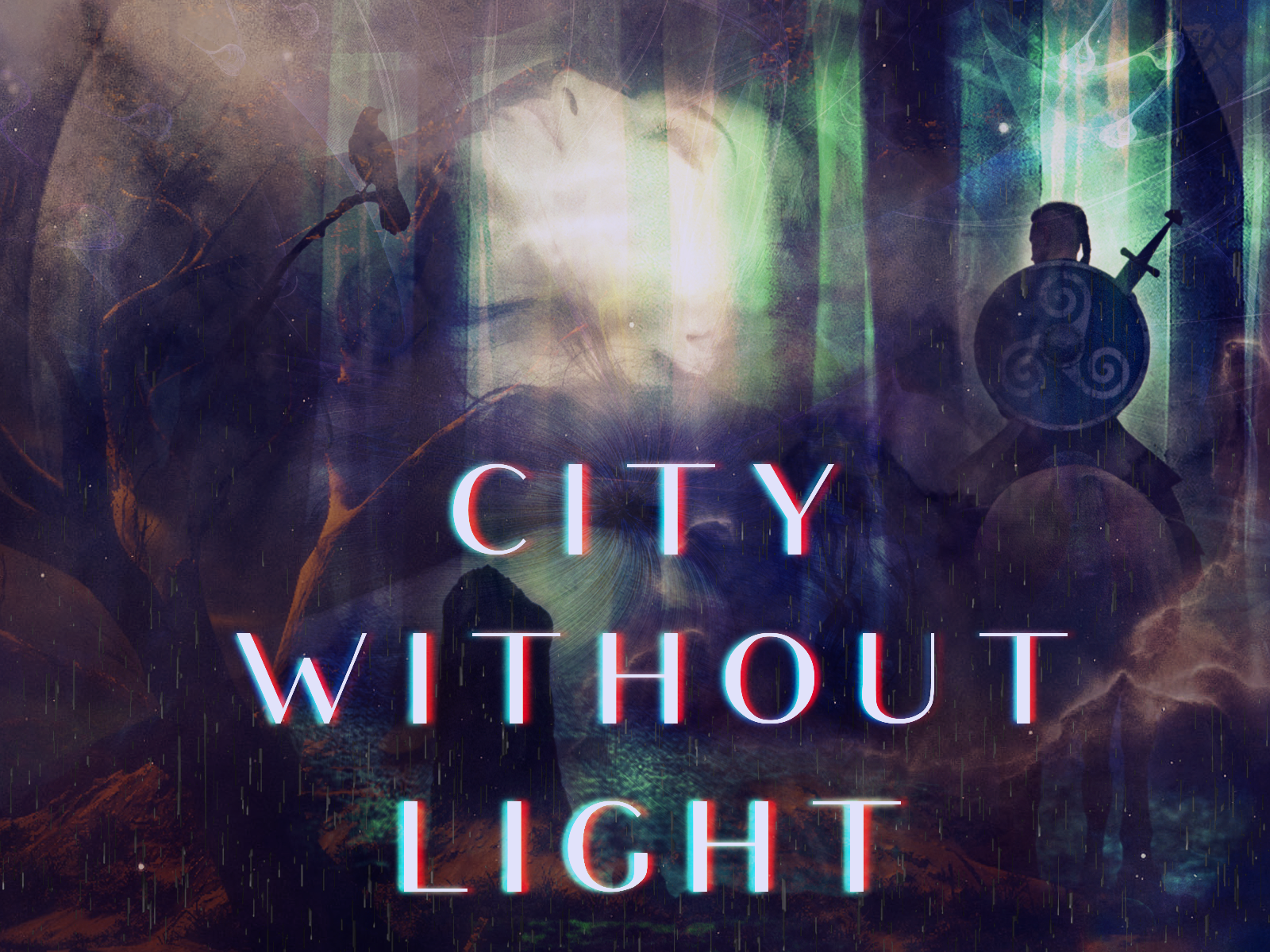Yesterday was the first of three Writer In Motion blog posts in a row, and I chatted a bit about what happens when your readers want your story to have a different ending than you do. Today I’m going to tackle what digesting reader feedback looks like as I dig into revisions for my short story.
I love critiques in all their beautiful forms. After many years with a wide range of feedback on my stories, I’ve learned that there are no two equal critiquers (they all have strengths in different areas), and that the most idea-sparking comments can sometimes come from a single insight that changes everything.
This round I’ve received feedback from six different lovely ladies: S. M. Roffey, Ellie Doores, S. Kaeth, Kathryn Hewitt, Stephanie Whitaker, and Monique Ocampo. Here’s what the bloodshed is looking like so far:
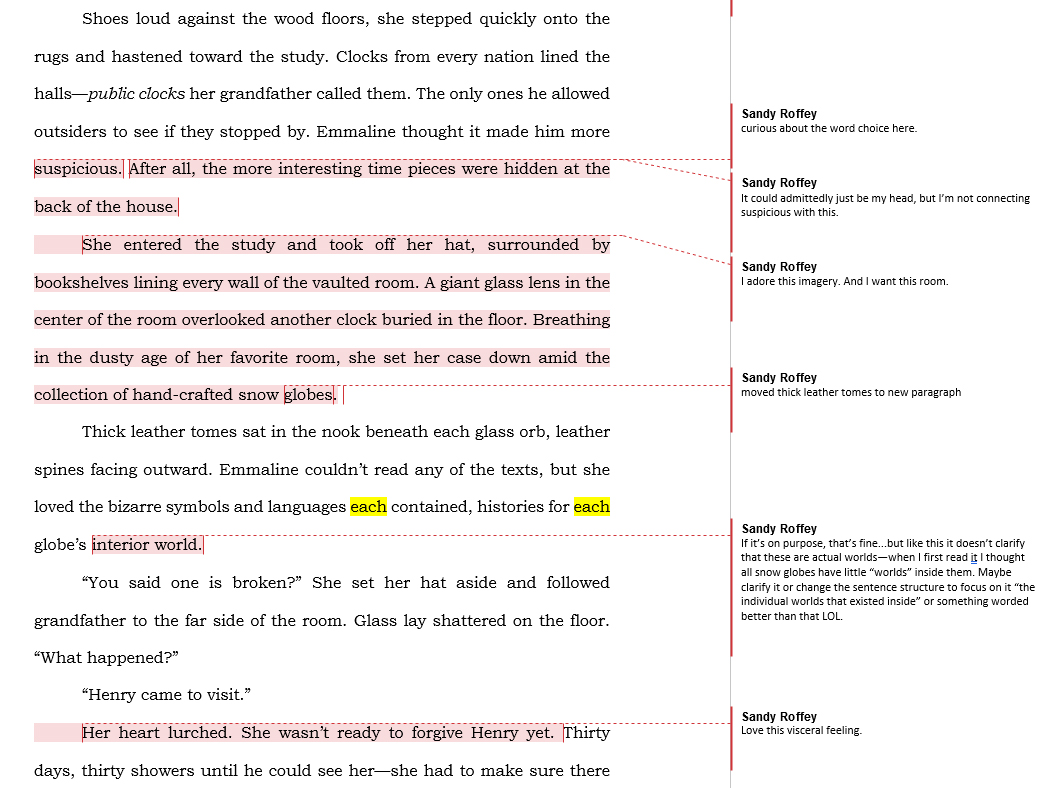
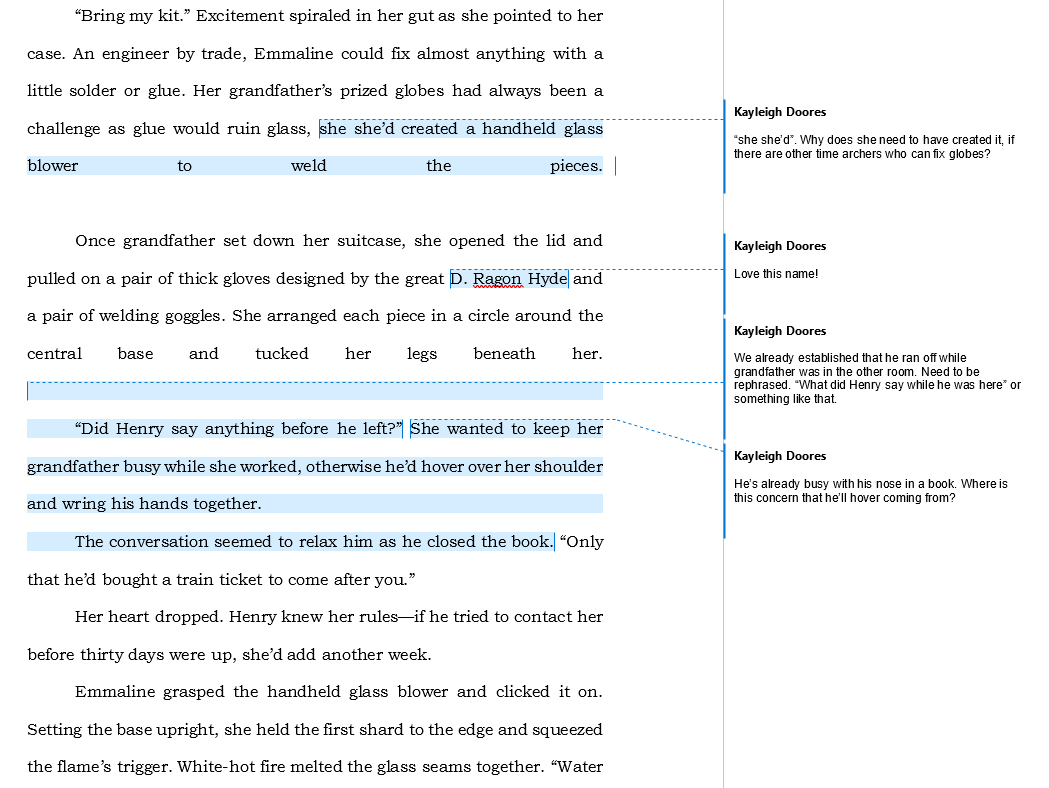
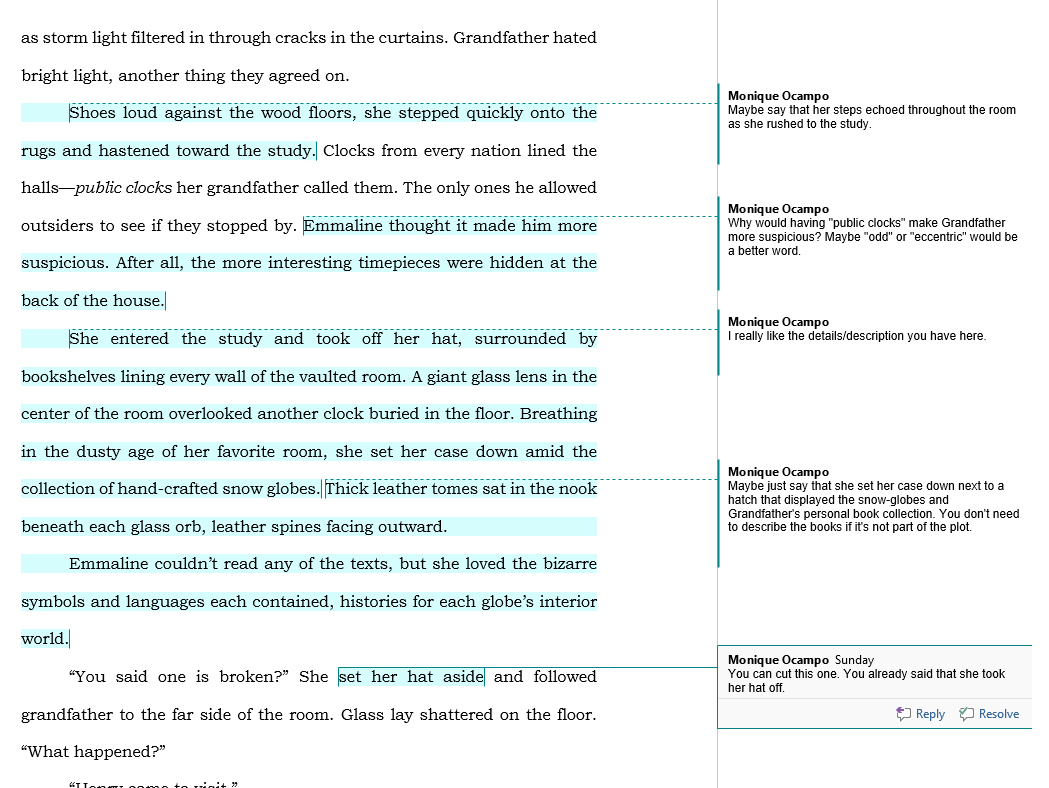
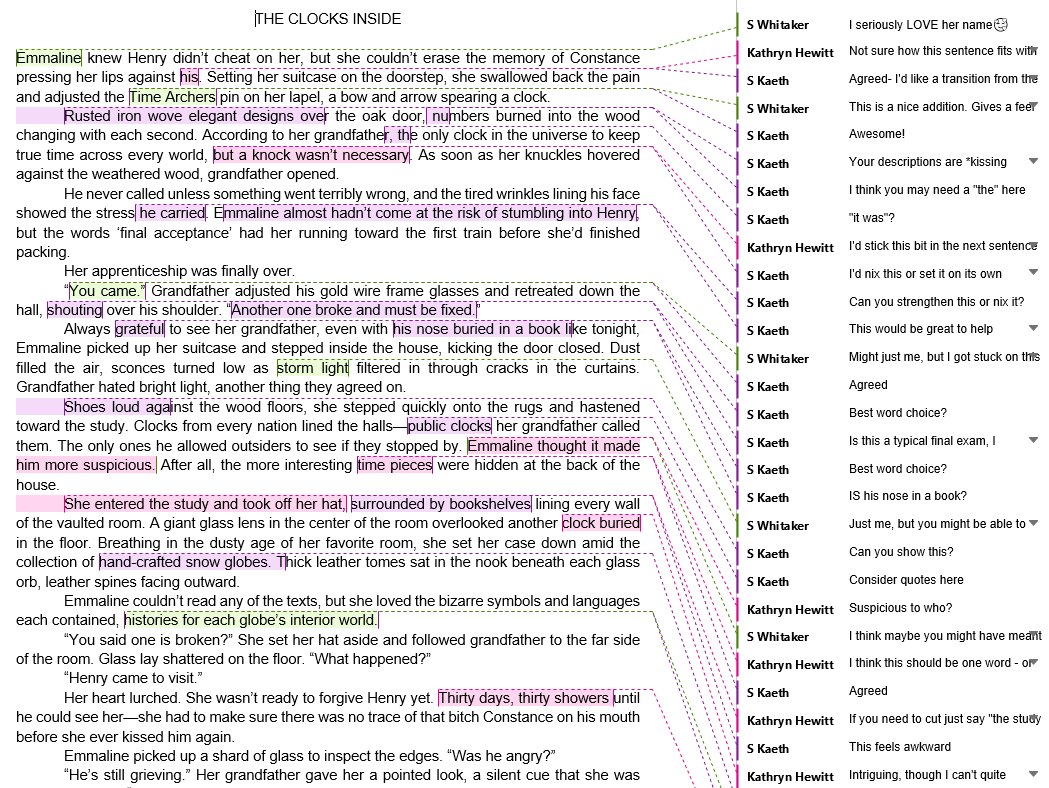
Do you see that last one? All of these are so beautiful, but that final one makes me jump up and down with excitement. Granted, three people contributed to that horror story, but I am absolutely in love when I open a critique doc and it looks packed in like that. Now onto the fun part – unwinding the mess.
How I Unwind
It’s a messy process, but this is where I find I’m at my most comfortable. The story is written, and I don’t have to try to guess what’s broken, I can see it through a reader’s eyes. So here’s what I do next (in order even):
- Save all critique documents in my story folder.
- Create a second copy of each with the prefix WORKING COPY___ (I like to save the original in case I need to reference it again).
- Read everything.
- Remove all the “I love this” comments to clean up that right side a little more.
- Fix grammar errors and minor comments. Many writers start big and go small, but cleaning up the small nuances helps me find words I’m overusing or grammatical errors on repeat mode.
- Flesh out small nuances and delete unnecessary lines (usually excess world building).
- Create a new file in Scrivener for the common ‘big issues’. Here’s where I get to write my own thoughts and notes on what my readers saw.
- Determine which bigger issues make sense to fix (and fix!) and which need a little more consideration.
It looks a bit like a long and drawn-out process, but most of this goes pretty fast. Usually things that take time are humongous plot holes in my novels, which usually means gutting down to the structure and character motivations again. Are we ready to dig in?
Common Thoughts Among My Readers
In all honesty, many of the notes my readers found were consistent across the board. A line didn’t work, or an action was awkward or out of place. The biggest thing ended up as an unbalance of clocks and snow globes without a connection between the two. So I did what every perfectly sane writer does—took an entire day to try and think through the problem, still didn’t come up with a solution, and then went back to tweaking the little bits to try and forge a clear path while I considered my next Netflix series to watch.
I whole-heartedly agree that the snow globes and clocks need a stronger connection. The struggle is to connect them enough to work for such a short piece even if the deeper weaving of the two can only take place in a larger novel.
My goal for today is to get everything down to under ten comments, take a few hours respite from the story, then read through it again to make the final adjustments. I’d like to have the next draft done by tonight and ready to launch for tomorrow’s blog post, but already it’s time to wake the kids for the day. Farewell writing time.

Leave your image stress to a pro and get back to writing with these holiday gift ideas. Learn more >

